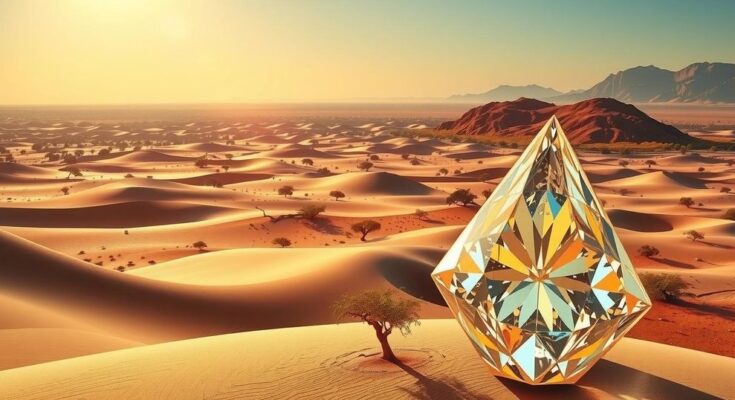Namibia’s marine diamonds, estimated at 75 million carats, form a significant portion of De Beers’ operations. Production has decreased to 2.2 million carats in 2024. Anglo American is planning a separation of De Beers for strategic flexibility, while demand for natural diamonds is expected to rise amidst declining lab-grown prices.
Namibia boasts the world’s richest marine diamond deposits, with reserves estimated at approximately 75 million carats spread across 1.0 million square kilometers of seabed. This marine resource contributes significantly to the partnership’s total diamond production, accounting for 80% of it and 94% of total resources, as reported in the Anglo American 2024 Integrated Report.
De Beers operates in Namibia through a joint venture with the Namibian government, managing both land-based diamonds through Namdeb and offshore mining via Debmarine Namibia. However, diamond production in Namibia decreased by 4% in 2024, totaling 2.2 million carats, partly due to a deliberate reduction in production at Debmarine Namibia. In contrast, Namdeb experienced improved efficiencies and higher-grade mining.
De Beers plays a vital role in the global diamond industry, producing roughly one-third of the world’s rough diamonds by value, specifically from key regions including Botswana, Canada, Namibia, and South Africa. Its joint venture in Botswana, known as Debswana, includes the valuable Jwaneng diamond mine and the large resource Orapa.
Anglo American has initiated a dual-track strategy to separate De Beers from the group’s overall structure through either a divestment or demerger. This move is intended to offer both entities greater strategic flexibility and enhance value for the shareholders, particularly the governments of Anglo American and Botswana.
To boost business efficiency, the separation aims to realize a US$100 million reduction in overhead costs under a streamlined operations strategy. Meanwhile, growing demand from countries such as the United States and India is anticipated to reduce midstream inventories, complemented by a renewed marketing focus on natural diamonds amidst improving consumer confidence globally.
In contrast, the wholesale prices of lab-grown diamonds are declining due to excess supply in key markets like India and China. As prices continue to drop, it is expected that this will enhance consumer awareness regarding the differences between lab-grown and natural diamond jewellery, with a notable shift back towards natural diamonds by retailers in the United States.
Namibia, possessing abundant marine diamond resources, remains a crucial player in the global diamond sector. Despite a slight production decrease, strategic changes aim to optimize operational efficiency and enhance market presence. Concurrent trends in consumer preference and market dynamics signal a potential shift back towards natural gemstones, reinforcing their value amid the rising competition from lab-grown alternatives.
Original Source: www.observer24.com.na




